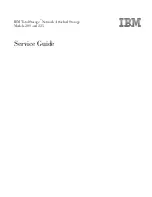
66
Device
Comparison process
Configuration BPDU on
ports after comparison
Device C
•
Port C1 receives the configuration BPDU of Port A2 {0, 0, 0, Port
A2}, finds that the received configuration BPDU is superior to its
existing configuration BPDU {2, 0, 2, Port C1}, and updates its
configuration BPDU.
•
Port C2 receives the original configuration BPDU of Port B2 {1,
0, 1, Port B2}, finds that the received configuration BPDU is
superior to the existing configuration BPDU {2, 0, 2, Port C2},
and updates its configuration BPDU.
•
Port C1: {0, 0, 0, Port
A2}
•
Port C2: {1, 0, 1, Port
B2}
•
Device C compares the configuration BPDUs of all its ports,
decides that the configuration BPDU of Port C1 is the optimum,
and selects Port C1 as the root port with the configuration BPDU
unchanged.
•
Based on the configuration BPDU and path cost of the root port,
Device C calculates the configuration BPDU of Port C2 {0, 10, 2,
Port C2}, and compares it with the existing configuration BPDU
of Port C2 {1, 0, 1, Port B2}. Device C finds that the calculated
configuration BPDU is superior to the existing one, selects Port
C2 as the designated port, and replaces the configuration
BPDU of Port C2 with the calculated one.
•
Root port (Port C1): {0,
0, 0, Port A2}
•
Designated port (Port
C2): {0, 10, 2, Port C2}
•
Port C2 receives the updated configuration BPDU of Port B2 {0,
5, 1, Port B2}, finds that the received configuration BPDU is
superior to its existing configuration BPDU {0, 10, 2, Port C2},
and updates its configuration BPDU.
•
Port C1 receives a periodic configuration BPDU {0, 0, 0, Port
A2} from Port A2, finds that it is the same as the existing
configuration BPDU, and discards the received one.
•
Port C1: {0, 0, 0, Port
A2}
•
Port C2: {0, 5, 1, Port
B2}
•
Device C finds that the root path cost of Port C1 (10) (root path
cost of the received configuration BPDU (0) plus path cost of Port
C1 (10)) is larger than that of Port C2 (9) (root path cost of the
received configuration BPDU (5) plus path cost of Port C2 (4)),
decides that the configuration BPDU of Port C2 is the optimum,
and selects Port C2 as the root port with the configuration BPDU
unchanged.
•
Based on the configuration BPDU and path cost of the root port,
Device C calculates a designated port configuration BPDU for
Port C1 {0, 9, 2, Port C1} and compares it with the existing
configuration BPDU of Port C1 {0, 0, 0, Port A2}. Device C finds
that the existing configuration BPDU is superior to the calculated
one and blocks Port C1 with the configuration BPDU
unchanged. Then Port C1 does not forward data until a new
event triggers a spanning tree calculation process, for example,
the link between Device B and Device C is down.
•
Blocked port (Port C1):
{0, 0, 0, Port A2}
•
Root port (Port C2): {0,
5, 1, Port B2}
NOTE:
, each configuration BPDU contains the following fields: root bridge ID, root path cost,
designated bridge ID, and designated port ID.
After the comparison processes described in
, a spanning tree with Device A as the root bridge
is established, and the topology is shown in
















































